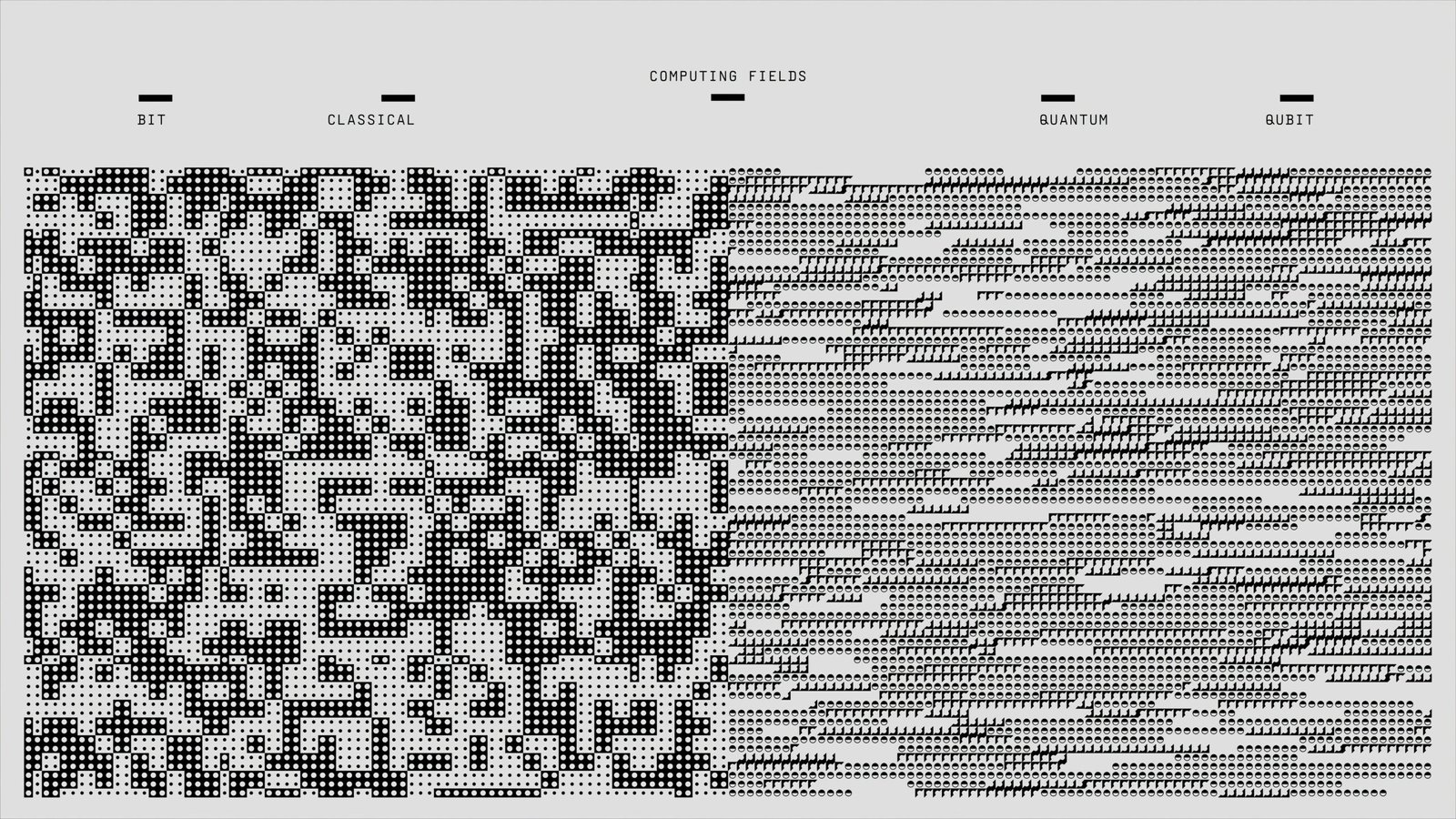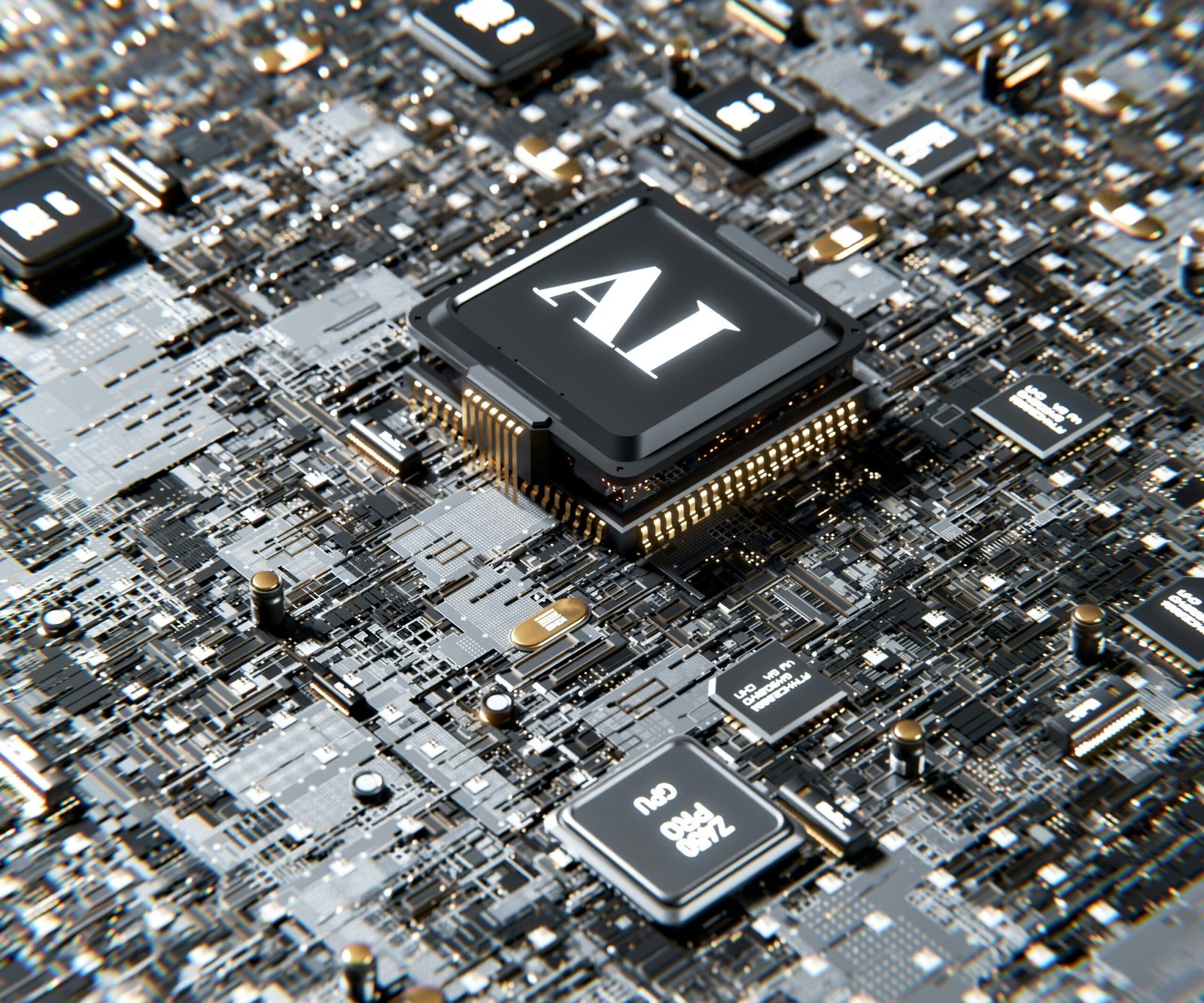Introduction to AI Technologies
Artificial intelligence (AI) has evolved significantly over the past few decades, transforming from a theoretical concept into a fundamental component of numerous industries. Initially, AI systems were designed to perform specific tasks, but recent advancements have expanded their capabilities to foster complex decision-making processes, predictive analytics, and enhanced user experiences. The rapid development of AI technologies has not only improved efficiency in various sectors but also introduced innovative solutions to longstanding problems.
As we look towards 2025, it is crucial to acknowledge the pivotal role that emerging AI technologies will play in shaping the future landscape of numerous sectors, including healthcare, finance, and transportation. The integration of advanced AI systems is expected to streamline operations, reduce costs, and drive significant improvements in productivity. Moreover, the collaboration between AI and other technologies such as the Internet of Things (IoT) and big data will further enhance the capabilities of AI, making it even more indispensable in the coming years.
The focus on neuromorphic computing, in particular, signifies a turning point in AI innovation. This technology mimics the neural structure and operation of the human brain, allowing for more efficient processing of information and enabling machines to learn and adapt in real-time. As industries increasingly adopt neuromorphic computing, we can anticipate a shift towards more intuitive AI systems capable of understanding complex environments and providing solutions tailored to diverse user needs.
In summary, the landscape of artificial intelligence is continually evolving, and the advancements expected by 2025 promise to revolutionize various fields. By understanding the significance of these emerging technologies, we can better appreciate their potential impact and begin to prepare for the changes they will bring. The role of neuromorphic computing, along with other AI innovations, will be critical in this transformative journey.
Understanding Neuromorphic Computing
Neuromorphic computing is an innovative approach that draws inspiration from the architecture and functioning of the human brain. Unlike traditional computing architectures, which rely on binary logic and linear processing, neuromorphic systems utilize a more parallel and adaptive methodology. This unique design enables them to process information in a manner that closely resembles biological neural networks, thus optimizing their efficiency and intelligence in handling complex tasks.
At the core of neuromorphic computing are spiking neural networks (SNNs), which replicate the way neurons communicate through short bursts or spikes of activity. These spiking events are fundamental to mimicking the dynamic way in which biological systems manage and transmit information. This allows for greater adaptability in learning and decision-making processes, resulting in machines that can process data in real-time with lower energy requirements compared to conventional systems.
The significance of neuromorphic computing extends to advancements in machine learning and artificial intelligence (AI), where it offers potential solutions to some of the limitations posed by traditional architectures. By leveraging the efficiency of spiking neural networks, neuromorphic systems can achieve improved performance in pattern recognition, sensory processing, and decision-making in uncertain environments. This advancement supports a new realm of applications, from autonomous vehicles to sophisticated robotics, where rapid and intelligent responses are crucial.
Moreover, as the demand for processing large-scale data increases, neuromorphic computing stands out as a viable alternative. Its ability to operate with less power consumption makes it particularly attractive in developing sustainable AI technologies. The evolution of this field promises to reflect in the capabilities of future AI systems, thus transforming various sectors by supporting advanced cognitive functions and learning abilities in machines.
The Advantages of Neuromorphic Computing
Neuromorphic computing represents a paradigm shift in how computational tasks are executed, moving away from traditional computing architecture to a model inspired by the human brain. One of the most significant advantages of neuromorphic computing is its power efficiency. Traditional computers consume large amounts of energy, particularly during intensive tasks such as data processing and machine learning. In contrast, neuromorphic systems mimic the brain’s structure, processing information using sparse coding and event-driven architectures. This results in significantly lower energy consumption, making it possible to run complex algorithms on smaller devices without overheating or draining resources.
Speed also stands out as a crucial benefit of neuromorphic computing. Conventional computing relies on a sequential processing approach, where operations occur one after another. Neuromorphic systems, however, can process multiple streams of information simultaneously, thereby enhancing the overall speed of information processing. Tasks that require real-time analysis—such as video surveillance, autonomous driving, and robotics—can benefit vastly from this capability. The ability to operate with parallel processing means that neuromorphic systems can achieve rapid response times, essential for applications requiring immediate decision-making.
Moreover, neuromorphic computing excels in handling complex tasks that require the integration of sensory information. Tasks such as image recognition, speech processing, and sensory feedback become more efficient and effective, leading to advancements in artificial intelligence applications. As neuromorphic designs become more sophisticated, their ability to learn and adapt will mirror human cognitive functions, providing groundbreaking opportunities across various sectors, including healthcare, finance, and smart technologies. This adaptability not only maintains performance but also leads to enhanced problem-solving in AI, promoting greater innovation in technology.
Real-World Applications of Neuromorphic Computing
Neuromorphic computing, inspired by the architecture and functioning of the human brain, is anticipated to make significant contributions across various industries by 2025. One of the most prominent areas for application is robotics. Neuromorphic systems can enhance robotic functions by enabling machines to process sensory data more efficiently, facilitating real-time decision-making and adaptive learning. This capability allows robots to interact intelligently with their environment, transforming sectors such as manufacturing, where collaborative robots, or cobots, will work alongside humans to increase productivity safely and effectively.
In the realm of healthcare, neuromorphic computing stands to impact diagnostics and patient care significantly. By analyzing vast amounts of medical data, these systems can identify patterns and anomalies that might elude traditional methods. For instance, in radiology, neuromorphic algorithms can revolutionize image analysis, leading to faster, more accurate diagnoses in conditions such as cancer. Furthermore, neuromorphic devices have the potential to support real-time monitoring of patients’ health conditions, enabling proactive interventions that can result in improved health outcomes and reduced hospitalizations.
Smart devices also represent a promising application of neuromorphic computing. As the Internet of Things (IoT) continues to expand, integrating neuromorphic solutions can enhance the intelligence of everyday products. Devices can become more context-aware, allowing them to adapt their functionality based on user behavior and preferences. For instance, smart home systems could anticipate residents’ needs, adjusting lighting and temperature automatically to optimize comfort and energy consumption.
By 2025, the integration of neuromorphic computing in these diverse sectors is expected to drive innovation and improve efficiency, demonstrating the technology’s vast potential in transforming daily life and industrial practices. The ongoing exploration of these applications highlights the importance of neuromorphic computing as a crucial element in advancing technology and improving human experiences.
Impact on AI Accessibility for the Average Person
The advancements in neuromorphic computing are poised to significantly enhance the accessibility of artificial intelligence technologies for the average person by 2025. This burgeoning field, which mimics the neural structure and functioning of the human brain, promises to democratize AI, enabling more individuals to interact with and benefit from AI applications seamlessly. As neuromorphic architectures become more prevalent, the cost of deploying AI solutions is expected to decrease, making sophisticated AI tools available to a broader population.
One of the critical aspects of neuromorphic computing is its capability to process data more efficiently and in real-time. This efficiency means that AI applications can work on less powerful devices, such as smartphones and home automation systems, fostering an intuitive user experience. Consequently, everyday users will no longer require specialized technical knowledge to utilize AI-driven tools, which will likely lead to an increased acceptance of AI in various spheres of life, including education, healthcare, and personal management.
Moreover, as neuromorphic computing enhances the ability of AI systems to understand and respond to human emotions and behaviors, the technology becomes more attuned to the needs of its users. For instance, personalized learning experiences in educational AI applications can cater to individual learning paces and styles, thereby making education more effective and accessible to everyone. Similarly, in healthcare, AI assistants enabled by neuromorphic algorithms could offer tailored advice and support, thereby bridging gaps in patient care.
Overall, the impact of neuromorphic computing on artificial intelligence is anticipated to extend beyond just technological advancements. By facilitating enhanced accessibility and user experiences, these innovations are likely to address real-world problems while empowering the average person to harness the benefits of AI in their daily lives. Such progress heralds a future where AI is not only a tool for specialists but a vital component of mainstream society.
Challenges in Adopting Neuromorphic Computing
Neuromorphic computing represents a transformative shift in technological capabilities, yet its widespread adoption does not come without significant challenges. One of the foremost hurdles is the technical complexity associated with designing and implementing neuromorphic systems. Unlike traditional computing, which follows linear execution paths, neuromorphic computing mimics the neural structures of the human brain, utilizing spiking neural networks. This innovative approach requires a new set of algorithms and hardware optimizations, which are often still in developmental stages. The intricate nature of these systems poses considerable challenges for developers and researchers who must navigate uncharted territories in computing architecture.
In addition to technical hurdles, the cost implications of implementing neuromorphic computing cannot be overlooked. Developing neuromorphic chips and corresponding infrastructure can be capital-intensive. Companies may find that the initial investment, coupled with ongoing operational costs, dissuades them from pursuing neuromorphic technology. Furthermore, as the technology is still emerging, there is limited availability in terms of off-the-shelf solutions. This scarcity often translates to increased expenditures and risk, factors that companies must cautiously consider when evaluating the viability of neuromorphic systems for their operational needs.
A further significant challenge lies in the need for an educated workforce capable of managing neuromorphic technologies. The integration of this advanced computing paradigm into organizational processes necessitates specialized knowledge and skills that are presently scarce in the labor market. Employees will require thorough training in both understanding the underlying principles of neuromorphic computing and in applying these principles practically. Without a sufficient talent pool, businesses may struggle to fully capitalize on the potential benefits offered by neuromorphic systems.
The Future of AI Beyond 2025
As we look beyond 2025, the landscape of artificial intelligence (AI) is poised for significant transformation, primarily driven by advancements in neuromorphic computing. This revolutionary approach to computing mimics the functionalities of the human brain, enabling machines to process information in a manner that is more efficient and akin to biological neural networks. With the capacity to handle complex tasks and learn from experiences in real-time, neuromorphic computing stands to redefine various sectors, from healthcare to autonomous transportation.
One of the emerging trends likely to take shape is the increased integration of neuromorphic chips with Internet of Things (IoT) devices. As these chips gain capabilities that mirror human cognition, the IoT ecosystem could leverage this technology to create smarter environments that autonomously adapt to user needs. For instance, homes equipped with such intelligent devices could manage energy consumption more efficiently or enhance security through advanced anomaly detection.
Furthermore, the combination of neuromorphic computing with quantum computing presents vast potential for breakthroughs. Quantum mechanics could amplify the capabilities of neuromorphic systems, allowing for unparalleled data processing speeds and complexity management. This synergy may enable solutions for previously insurmountable challenges, including climate modeling and personalized medicine, where AI learns from vast datasets to predict outcomes with high accuracy.
In the realm of machine learning, neuromorphic computing is likely to foster advanced methods of unsupervised learning, where systems could autonomously categorize and interpret data, leading to innovative applications in user interaction and decision-making processes. Enhancements in natural language processing powered by neuromorphic architectures could also lead to more human-like interactions with AI, facilitating seamless communication and understanding.
Overall, the trajectory of AI technologies post-2025 will undoubtedly be influenced by the transformative capabilities of neuromorphic computing, setting the stage for a future where AI not only complements human abilities but also enhances them in ways we are yet to fully comprehend.
Conclusion: Embracing Change in the AI Landscape
As we have explored throughout this discussion, the advancements in artificial intelligence (AI) technology, particularly neuromorphic computing, are poised to significantly reshape the technological landscape by 2025. The unique architecture of neuromorphic systems, which mimics the human brain, allows for enhanced processing capabilities, reduced energy consumption, and increased efficiency compared to traditional computing methods. These innovations will undoubtedly pave the way for new applications, enhancing fields such as robotics, autonomous vehicles, and advanced data analytics.
The importance of embracing these technological changes cannot be overstated. As organizations and individuals, it is essential to remain informed about the ongoing developments in AI technologies. Embracing neuromorphic computing will require adapting our skills, updating organizational infrastructures, and rethinking problem-solving approaches in various industries. By proactively preparing for these shifts, one can harness the benefits that neuromorphic computing promises, thereby maintaining a competitive edge in the fast-evolving digital landscape.
Moreover, engaging in continuous learning and professional development will be crucial as we transition into this new era dominated by advanced AI technologies. Collaborations between technical experts and industry leaders will further accelerate the adoption of neuromorphic systems, ensuring that their full potential is realized for societal benefit.
In summary, the future of AI heralds the rise of neuromorphic computing and its transformative impact. By recognizing the significance of these changes and committing to adapt accordingly, we can collectively navigate the complexities of the future AI ecosystems. Staying informed, developing relevant skills, and fostering innovation will enable us to capitalize on the opportunities presented by these groundbreaking technologies.
Engage with the Future of Neuromorphic Computing
As we stand on the brink of significant advancements in neuromorphic computing technology, it is crucial for enthusiasts, researchers, and the general public alike to join the conversation. This innovative technology, designed to mimic the human brain’s architecture and functioning, holds immense potential in revolutionizing fields such as artificial intelligence, robotics, and even healthcare. We invite you to reflect on the information presented in this blog post and share your thoughts on how neuromorphic computing could impact our everyday lives.
Your insights are invaluable. How do you see neuromorphic computing reshaping various industries in the next few years? Are there specific applications you envision that could benefit from this technology’s adoption? By commenting below, you can contribute to a richer dialogue on this fascinating subject. Engaging in discussions with others allows us to broaden our understanding and clear up any uncertainties regarding the implications of these advanced technologies.
Furthermore, we encourage you to explore additional resources related to neuromorphic computing. Numerous academic articles, online courses, and webinars are available that delve deeper into the intricacies and potential applications of this technology. Supplementing your knowledge will help clarify concepts and better prepare you for the profound changes that may come with its integration into society.
In this era of rapid technological change, the role of the community is paramount. Your engagement can ignite interest and inspire innovations in neuromorphic computing, making a significant impact on how we understand and utilize these groundbreaking advancements. Please share your ideas, questions, and thoughts. Together, we can foster a deeper appreciation of neuromorphic computing and its prospects for 2025 and beyond.




